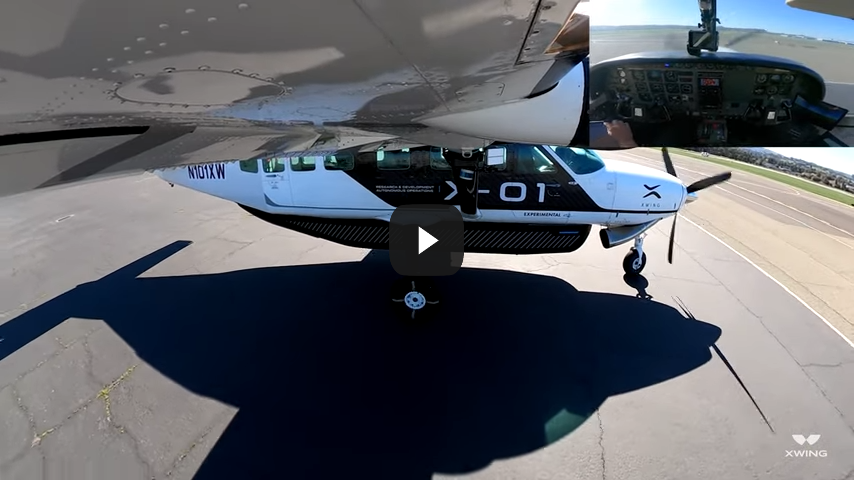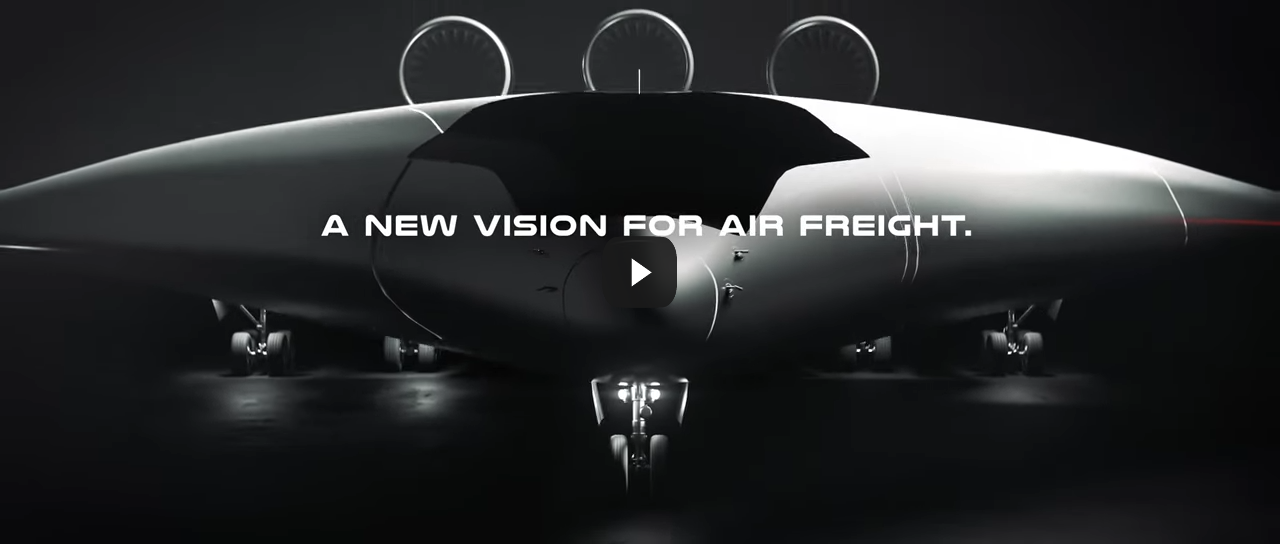Taking Flight: Autonomous Cargo Aircraft

The growth in e-commerce has made expedited shipping even more crucial to global trade. Could autonomous cargo aircraft be the solution?
Air cargo moves over USD 6 trillion worth of goods, which account for around 35% of world trade by value. With the rise of e-commerce, speed, reliability, and convenience are of the essence in the delivery of goods. Let’s take a look at the companies vying to dominate the skies with autonomous cargo aircraft.
Elroy Air
The California-based startup was founded in 2016 to “enable same-day shipping to every person on the planet.” The company has received funding and support from big players such as Lockheed Martin Ventures and the Agility Prime program of the U.S. Air Force.
Last January, it unveiled its pre-production vertical take-off and landing (VTOL) aircraft, the Chaparral. The Chaparral can autonomously pick up cargo weighing up to 500 pounds and has a maximum range of 300 miles.
The hybrid-electric Chaparral uses eight vertical fans for lift and hovering, while four distributed electric propulsors enable forward flight. The Chaparral can pick up and drop off lightweight, aerodynamic cargo pods without human intervention. Built to fit in a forty-foot shipping container or a C-130 cargo aircraft, the Chaparral can be quickly shipped and deployed where it is needed.
“We have designed an aircraft that behaves like a hybrid between a rough-and-ready helicopter and a battle-hardened bush plane, that can pick up cargo anywhere with a 50 square foot landing area,” Clint Cope, Co-founder and President of Elroy Air, said in a statement. “The Chaparral will be a vital logistics link for people around the world with unreliable roadways and in remote and rural areas that take longer to reach today.”
The company announced it secured agreements for more than 500 Chaparral aircraft from commercial, defense, and humanitarian customers. These include Mesa Airlines, a U.S. regional airline, and AYR Logistics, a humanitarian logistics and transportation company.
“Moving to unmanned, aerial cargo vehicles will make a huge difference to our cost structure and the risk profile of our operations. We fly in difficult terrain and difficult conditions,” Stephen Lyons, Chief Development Officer of AYR Logistics, shared.
“We don’t always have the luxury of a runway or even personnel at some locations. There simply hasn't been a UAV with the type of capabilities that the Chaparral has in the commercial markets,” Lyons continued. “The Chaparral is a quantum leap in terms of load carrying and range as well as being able to operate with minimal infrastructure.”
Xwing
Xwing, another California-based startup, is taking the retrofit approach. Xwing has developed autonomous flight technology to convert existing aircraft into remotely piloted vehicles.
“The features that make the Xwing AutoFlight system stand out from the competition is that it does full air space integration. All the coordination with air traffic control [and] with other aircraft, dynamic planning in the air and on the ground,” said Edward Lim, Lead Controls Engineer at Xwing. “Additionally, the system is designed to be platform agnostic–to be able to be installed in any type of aircraft. It allows full autonomy of the entire operation.”
Last February 2021, the company completed what it claims to be the world’s first fully autonomous gate-to-gate flight of a commercial cargo aircraft. The Cessna Grand Caravan 208B was remotely controlled from their mission control center in Concord, California.
According to Maxime Gariel, Chief Technology Officer at Xwing, the AutoFlight system used in the gate-to-gate flight has three main components. First, an automated flight control system for all flight control surfaces. Second, a Perception stack for obstacle detection and avoidance consisting of radars, ADS-B, cameras, and lidars. Third, for flight test purposes, a redundant command and control link plus a telemetry link.
Natilus
With its blended wing body, the Natilus can pack in 60% more cargo than existing freight aircraft, according to the company. Doing away with the traditional tube and wing aircraft design, its aerodynamic profile reduces drag and fuel burn, lowering carbon emissions by 50%.
There are four models of the remotely-piloted cargo aircraft by Natilus:
- 3.8-ton payload short-haul feeder UAV
- 60-ton payload medium/long-range UAV
- 100-ton payload long-range UAV
- 130-ton payload long-range UAV
According to the company, its aircraft will use existing ground infrastructure and standard air cargo containers, making them a turnkey solution for the global cargo industry.
“Sea freight is currently 13 times less expensive than air freight, but 50 times slower in delivery,” said Aleksey Matyushev, CEO and co-founder at Natilus. “Natilus intends to revolutionize the transport industry by providing the timeliness of air freight at an affordable cost reduction of 60%, making air cargo transportation substantially more competitive.”
The company announced it has USD 6 billion in advance purchase commitments from companies that include a cargo airline, a drone service provider, and a freight forwarding company. The aircraft has undergone its second round of wind testing, with the first flight of its full-scale prototype slated for 2023.
Delivering the future
Despite phenomenal growth in global trade, the typical logistics supply chain has remained relatively unchanged since the middle of the twentieth century. Innovations in autonomous aircraft design and flight technology can usher in a new era for how goods are transported.
As one of the Top 21 EMS companies in the world, IMI has over 40 years of experience in providing electronics manufacturing and technology solutions.
We are ready to support your business on a global scale.
Our proven technical expertise, worldwide reach, and vast experience in high-growth and emerging markets make us the ideal global manufacturing solutions partner.
Let's work together to build our future today.
Other Blog






